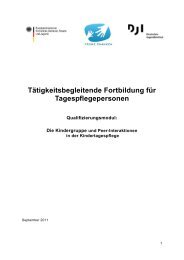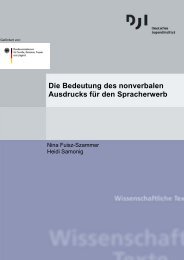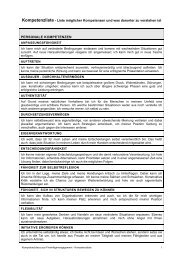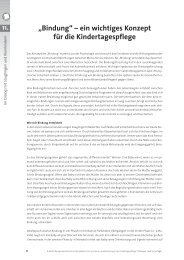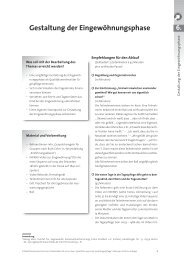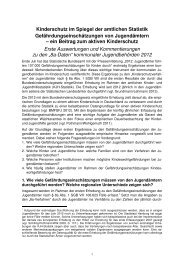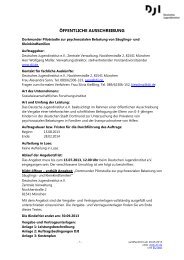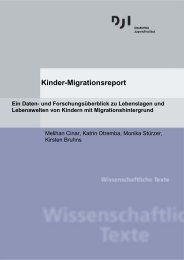download - Deutsches Jugendinstitut e.V.
download - Deutsches Jugendinstitut e.V.
download - Deutsches Jugendinstitut e.V.
Create successful ePaper yourself
Turn your PDF publications into a flip-book with our unique Google optimized e-Paper software.
3. multi-cultural mixed structure in/around the locations, facilities and organisations<br />
providing identity,<br />
4. intercultural programme offered by socio-environmental institutions (day-care<br />
centres, schools, clubs and leisure centres)<br />
5. positive mediation arrangements.<br />
According to Bourdieu, the social environment is more an environment of semantic<br />
association and on no account merely physical space. This environment is shaped through<br />
the combination of specific social lifestyles and social positions which are in turn created<br />
through a hierarchy of economic, cultural and social resources.<br />
Differentiated approaches for the development of urban districts<br />
Can prevention strategies be created which are adequate to solve<br />
existing problems?<br />
Developments in the urban environment can both cause and encourage disintegrating<br />
structures. They are instrumental in shaping the various characteristics of the district<br />
through their effects as learning fields, contrasting experiential fields, labelling and<br />
solidifying fields and also as spaces which communicate disintegrating and disorientating<br />
impulses to their inhabitants.<br />
Causes, backgrounds, development forms and opportunities are all highly varied and<br />
necessitate differentiated prevention strategies and approaches which are socioenvironmentally<br />
adequate: these will be briefly discussed below. The various appropriate<br />
measures to be undertaken are oriented towards three overriding aims: integration,<br />
establishment of regulations and residential environmental planning. The following specific focal<br />
points should be developed according to these target contours for the four segregation<br />
types:<br />
Type Ghetto:<br />
• Enhancement within the general local context e.g. through the relocation of<br />
sub-central or central community facilities and services and/or attractive<br />
commercial facilities for the whole town such as sports facilities, leisure<br />
activities and cultural or even consumer facilities. Examples include the<br />
construction of a supra-regional shopping centre on industrial wasteland in a<br />
disadvantaged neighbourhood in the city of Cologne, the Guggenheim Museum<br />
designed by Gehry in the harbour area of Bilbao or the World Cup stadium in<br />
Paris.<br />
• Combination of work and training projects with improvements undertaken in<br />
residential areas (for example: refurbishment of buildings and green spaces in<br />
socially disadvantaged housing estates such as the Ahornstrasse in<br />
Frankfurt/Main by means of an employment project organised by a city youth<br />
welfare organisation) with working units consisting of peer groups.<br />
• Community work based on the US-American “leader model“: i.e. the utilisation<br />
of existing informal local “hierarchy structures” for internal regulation and<br />
representation approaches in dealing with external groups. Existing groups of<br />
this kind must be partially formalised and upgraded, frequently also<br />
democratised with the aid of expert support and “freed” from previously<br />
repressive impulses;<br />
95



